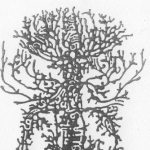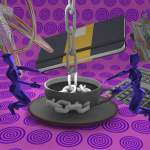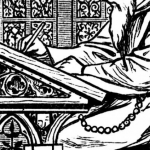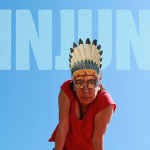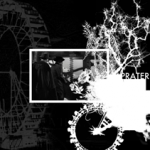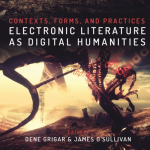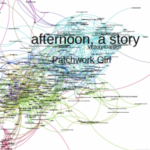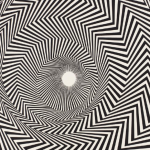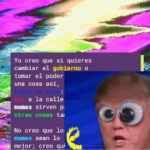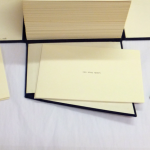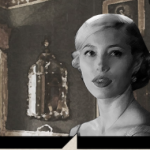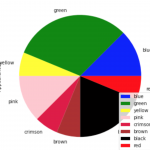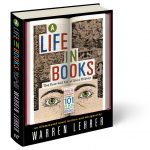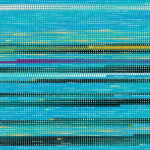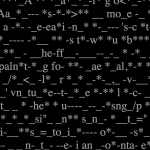2021
This essay engages with the complex translation of materiality that occurs between Darren Wershler’s NICHOLODEON (1997) and its eventual digital incarnation as NICHOLODEONLINE (1998). Both of these works pay homage to the influential avant-garde Canadian poet, bpNichol. Beyond situating Wershler’s texts in a historical framework that moves from Nichol to the 'Pataphysics of Alfred Jarry, Sean Braune looks at select metadata “clues” that Wershler left behind for the curious-minded reader (human and machine), as well as placing Wershler’s work (and Nichol’s by extension) in the context of theories of language that move from the human to the “tower of programming languages” that are described by Rita Raley and Friedrich Kittler.
MLA Chernoff closely examines Rachel Zolf's intentionally unreadable suite of transmedial poetry, Human Resources (2007), in order to discern a digital poetics of appropriation that carefully grapples with the problematics of historically exclusionary institutions like conceptual poetry and CanLit. They argue that behind the constraint-based, numerological practices used to create these strange poems lies a pragmatic – yet metaphysically-grounded – method of reframing the professionalization of creative writing and upending the neoliberal conventions of governmental grants.
In this riPOSTe-turned-essay, John Cayley reflects on “the perpetual problem of terminology” in the field of electronic literature.
Alois Sieben investigates how Jordan Abel’s Injun experiments—poetically, visually, digitally—with an anxiety-provoking limit to the settler-colonial gaze, rather than feeding this gaze a new representation of Indigeneity. Abel’s work is positioned within David Garneau’s history of Indigenous screen objects, in which something is held back from the settler-colonial gaze, a form of deprivation that exposes the blind hunger of this gaze, turning it back upon itself.
Carl Watts argues that J.R. Carpenter’s Entre Ville constructs Canadian literature as a unified, holistically understood entity that is both broadly accessible and fleetingly familiar. In so doing, Carpenter’s work aligns representations of Montréal with uses of new media, with the cross-cutting and mutually exclusive identities of the former mirrored in new-media poetry’s partial or conditional embrace of the formal possibilities of digital poetry.
88 Constellations for Wittgenstein (To be Played with the Left Hand) (2008) by Canadian artist David Clark is a web-based Flash creation that explores the life and works of Austrian-born philosopher Ludwig Wittgenstein. In this paper, we show how rhetoric and digital technologies join to visually express philosophical concepts. The idea of “visual music” has been previously addressed in various fine arts such as literature, film, painting, sculpture, and music itself. We argue that in electronic literature it is possible to explore this concept by means of what we propose to call “gestural melodic manipulation”, which is the interplay of semiotic units (e.g. videos, sounds, images, linguistic texts) that the reader can add to the narrative by means of interaction and manipulation. In Clark’s e-lit work, “visual music” triggers the literary characteristics of the text by exposing different discourses and diverse thematic through intertextual and intermedial practices.
Electronic Literature as Digital Humanities: Contexts, Forms & Practices is a volume of essays co-edited by Dene Grigar and James O’Sullivan that provides a detailed account of born-digital literature by artists and scholars who have contributed to its birth and evolution. Rather than offering a prescriptive definition of electronic literature, this book takes an ontological approach through descriptive exploration, treating electronic literature from the perspective of the digital humanities (DH)––that is, as an area of scholarship and practice that exists at the juncture between the literary and the algorithmic.
The ELMCIP Electronic Literature Knowledge Base is a large-scale digital humanities database that emerged from a six-nation European research project on electronic literature. The Knowledge Base has since grown to become the most comprehensive open-access contributory database in the field, and is still actively developed. The project director, Scott Rettberg, reflects on the process involved in developing the database and the challenges involved in continuing to document the ever-changing landscape of the field of electronic literature.
Thinking about the ways in which critical infrastructure studies can allow us to engage in antiracism critiques and practices, Ryan Ikeda provocatively challenges the electronic literature community to address some of the symbolic and material structures that he argues uphold the field. To this end, Ikeda positions elit infrastructure as dynamic and generative sites of cultural activity, and attends, in particular to the ELMCIP Knowledge Base, recent ebr discourses on decolonization, ELO fellowships, and literary historical genealogies, to examine how each constructs, affirms, racializes and extends power, privilege, and status to its members.
Claudia Kozak evaluates the potential of experimental e-lit to build decolonial critical paths within global digital humanities. Framing her perspective in the Epistemologies of the South (Sousa Santos) and decolonial thinking (Mignolo), she draws attention to politics of knowledge and analyses issues such as linguistic hegemonies, e-lit imaginaries and genealogies emerging from the Souths and unexpected mixtures between experimentalism and third-generation e-lit in Latin America.
2020
Presenting the writerly and highly remixable analog edition as both pre- and proto-digital, Carly Schnitzler revisits Robert Grenier’s Sentences. She compares the analog version of “shuffle literature” (in choosing the term, she follows the footsteps of Nick Monfort and Zuzana Husarova), published as five hundred index cards stored in a box, with its 2003 digitized edition. Such comparison serves to set the ground to investigate further the potential for writerly literary forms of what Lawrence Lessig once described as Read/Write culture, beyond the analog/digital dichotomy. The detailed and attentive analysis proposed by Schnitzler leads to somewhat surprising conclusions, where the algorithmically driven automatic choices present far less potential for meaningful and open-ended interaction with the text. Simultaneously, all the nuances surrounding the relatively early efforts at rendering Sentences as an object of networked reading are demonstrated here, including hints on digitization as a practice with its own history.
In this review of Asemic: The Art of Writing, Diogo Marques considers alongside author Peter Schwenger the seemingly asemantic style of asemic writing as a genre taking on new meaning in contemporary reading and writing networks, particularly in light of the paradigm shifts they continue to undergo as brought about by digital media.
How do we think about things — like electronic literature — that combine the operational aspects of computing systems with the affective and representational aspects of the arts? We could view them through the frameworks of computer science, the literary arts, or critical interpretation. These can all be valuable. But they are all, inevitably, partial. Wardrip-Fruin proposes that digital humanities frameworks can provide a way of thinking about the dual elements of electronic literature simultaneously. Here he provides a case study: a strand of research that is both in computational approaches to social simulation and in the creation of works that build upon, and guide the development of, these simulations. He discusses the digital humanities concepts of operational logics and playable models that help him and his collaborators understand their work as they carry it out.
Sarah Whitcomb Laiola insightfully analyzes Stephanie Strickland’s recent poetry book, looking into how Strickland continues the tradition of poetic text generation, engaging at the same with material constraints resulting from 17th century pattern-ringing. The practice consists of competing teams ringing church bells based on highly complex mathematical patterns. Building on these, the poet and her team created elaborate and complex algorithms that generate the poetry woven out of textual data harvested from writings of Sha Xin Wei, Simone Weil, Hito Steyerl, and Yuk Hui among others. Written with Python code, the work demonstrates the powerful “poetics of juxtaposition”, where the list of names of Black men and women subjected to state-sanctioned violence strongly resonates throughout the whole texts.
As the present gathering introduces Electronic Literature into the Digital Humanities, the DH at Berkeley Program brings the Arts/Humanities into Science, Technology, Engineering and Mathematics: turning STEM into STEAM.
Discussing the works of three digital creative practitioners working in Ireland, Anne Karhio situates Ireland itself as a case study for demonstrating the ways in which electronic literature as a seemingly global and transnational practice can confront the complexly situated realities of everyday embodiment, technological materiality, and politicization of national borders. She thus recommends electronic literature be seen as more crucial part of digital arts and humanities research in Ireland and elsewhere.
Here is the transcription of an extended conversation between multimedia artist and author Warren Lehrer and Brian Davis (a recent contemporary literature and poetics PhD grad from University of Maryland) that began in February 2020 at Lehrer’s studio in Queens, NY soon after the opening of the exhibition “Warren Lehrer: Books, Animation, Performance, Collaboration” at the Center for Book Arts in Manhattan. They discuss Lehrer’s recent book, Five Oceans in a Teaspoon (2019), a collection of visual poems written by Dennis J Bernstein, visualized by Lehrer, as well as Lehrer’s long running commitments to visual literature and collaborative art going back to the early 1980s. In addition to discussing several of Lehrer’s bookish projects, including his novel A Life in Books (2013), they discuss the different writing and printing technologies Lehrer has worked with and in over the years, as well as current issues in contemporary literature studies, such as documentary aesthetics, autofiction, and satire.
Marino, Douglass, and Pressman describe their award-winning collaborative project, Reading Project: A Collaborative Analysis of William Poundstone’s Project for Tachistoscope {Bottomless Pit} (2015). Given the novelty of Poundstone’s work and its deviation from traditional forms of print-based literature, the authors break down the methods and platforms that allowed them to respond with new ways of reading—what they call “close reading (reimagined).” Indeed, their respective methods of interpreting Poundstone reminds that the field of e-literature not only brings new literary forms to our critical attention, but also necessitates that hermeneutics adapt to digital contexts as well.
Reading Project was awarded the ELO’s 2016 N. Katherine Hayles Award for Literary Criticism on Electronic Literature.
Seiça describes modification as an art practice meant to subvert and divert from what we—as readers, spectators, and also consumers—expect from technological apparati and platforms. He extends the study of mods to “lit mods”—including art, games, and literature.
In particular, Seiça notes that the learning curve for modding has changed: where in the past, it may have taken a certain amount of user knowledge, modification may now be automated (for instance, through Instagram filters). More importantly, he asks what lit mods show us about literary practice and literary criticism. Where fast-moving content—fast-moving e-literature and e-poetry included—may defy interpretation, so analysis is strengthened by breaking down their mechanisms.
Via close readings of Eugenio Tisselli's degenerative and regenerative, ¨paired works that become progressively less comprehensible the more users interact with them," we are able to grasp the ecological costs of the time we spend online. And we can begin to recognize, with Justin Berner, a concern with permanence and ephemerality in the digital sphere that is not unique to the work of Tisselli. It is, rather, a common thematic concern throughout the history of electronic literature. The term that Berner advances for this literary countertext to the instrumentalism of the Digital Humanitiers, is digital posthumanism.
